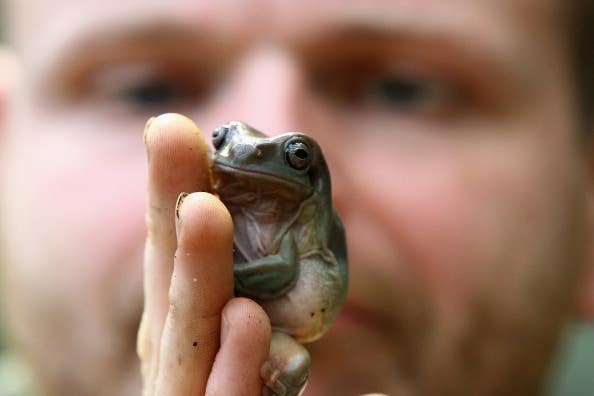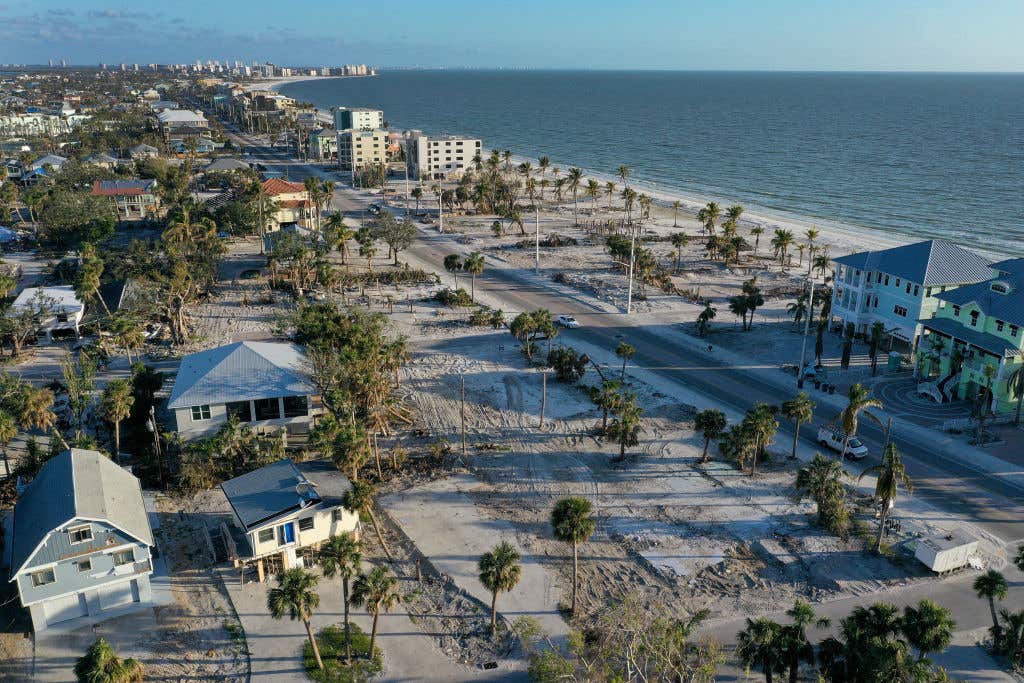
There is a wild adventure happening at Florida Gulf Coast University. Student Bryce Sweely trekking through the thick woods, heading straight into a cypress dome. Sounds like the setup for a horror movie, right? But no, she’s there for a serious mission. Studying tree frogs.
According to NBC2, they have three types of tree frogs on campus. Two are the good guys: the green and squirrel tree frogs. They’re the locals, minding their own business. Then there's the villain of the story, the Cuban tree frog. This guy is like that one rude neighbor who moves in and starts stealing everyone’s parking spots.
These Cuban tree frogs are tricky too. You spot them by their big toepads and blue bones. They eat up all the resources and even munch on the native frogs. And experts say that if you lose the local frogs, you’re in big trouble. It’s like putting all your money on one horse and that horse decides to quit racing.
And it gets worse. These Cuban frogs are like the Florida Man of frogs. They adapt to urban life better than the locals, popping up around your home, messing with your utilities, and causing all sorts of chaos. Imagine opening your utility box and finding a frog cutting your electricity. They are annoying little buggers.
The rainy season’s coming too, and that’s like throwing a wild party for these frogs. While all frogs enjoy a good rain, the Cuban tree frogs throw an all-out rager. Their numbers could then skyrocket, and that’s bad news for everyone.
So, what can we do? Well, Bryce and her crew are all about protecting natural spaces like the Cypress Dome. It’s like giving the native frogs their own VIP section. We can’t kick out the Cuban frogs completely, but we can make sure the natives have a fighting chance.
Cuban tree frogs breed like mosquitoes in any standing water like kid pools, buckets, you name it. If you don’t want these pests taking over, make sure you’re not giving them a breeding ground. And if you need more tips, check out the University of Florida’s guide on handling these slippery invaders.
Power Ranking The 14 Wild Animals In Florida That Can Kill You
Florida can be a scary place, there's danger all around. That's why it was easy to do a Power Ranking of deadly wild animals here in the Sunshine State. I came up with the 14 scariest critters you can come across here in Florida.
Spoiler alert! Squirrels did not make the power ranking, although you'd think they were deadly considering the way my dog reacts when she sees one.
Other Things In Florida That Can Kill You.
Although this article covers the power ranking of wild animals in Florida that pose a threat to your life, I need to touch on some other dangers first. Like the roads. It is truly dangerous down here. We're a combination of retirees driving 10 mph below the speed limit, and locals driving 20 over.
I credit my ability to survive the Florida streets to my years of playing Grand Theft Auto. In that game, the cars on the road drive slow and change lanes for no reason whatsoever. Sometimes they cross three lanes of traffic to make a turn. Sound familiar?
Another thing attacking Floridians is pollen. Tree pollen is especially high this spring, and grass pollen isn't far behind. Although allergies aren't likely to kill you, it certainly makes you not want to be outside. That sinus headache is no joke.
Mother Nature Doesn't Want Us Here In Florida.
I have never lived anywhere else in the country where I felt that nature doesn't want me there like I do in Florida.
Hurricane Ian did tremendous damage in Southwest Florida, but lost in that, is the tornado that happened earlier in the year. Ya'll remember that tornado that destroyed a trailer park and created an 8 mile path of destruction through Fort Myers in January of 2022? And then we got Hurricane Ian later that same year.
Power Ranking The Wild Animals In Florida That Can Kill You.
This isn't based on number of kills or anything scientific like that. It's more on the level of how much each one freaks me out. Ranker also helped with this list.
1. The Box Jellyfish
Animals that I can't see because they're under the water freak me out more than most. Enter the box jellyfish. Although only a small percentage of stings are fatal, when they are - they kill quickly. Fun fact: each jellyfish carries enough venom to kill 60 humans and the sting is incredibly painful. To alleviate the pain you can pour vinegar on the sting, but don't pee on it. I have no idea how that myth got started, but peeing on someone who just got stung won't help. Actually, I'm kind of against peeing on anyone, anytime - but I understand that is a "thing" for some.
2. The Brown Recluse
Brown recluse spider bites are not usually fatal, but these little things rank at number 2 because of the way they attack. Bites happen when the spider gets trapped against the skin. This includes bedsheets or in clothing and shoes. Remember, if you've had your shoes off outside, always shake 'em and tap them on the ground to make sure nothing crawled in there.
The venom from the bite causes the skin around the bite to die. It can take months to heal and may scar. Ask Sheila what it's like to get bit.
3. The Black Widow
Yes, spiders take the number 2 and number 3 spot. I've run across several of these things in Southwest Florida, but have so far stayed on their good side. A black widow bite can produce painful swelling, cramps, muscle spasms, and nausea. The symptoms usually go away after about 12 hours. Unless the bite is on a child or the elderly. It can kill them.
4. The Eastern Diamondback Rattlesnake
This is the largest and most dangerous snake in Florida. Yes, there's more. If you walk up on one, it will raise up and began to rattle its tail to look larger and more intimidating. That's your clue to slowly back away. In most instances the snake will avoid confrontation and leave, but if it strikes, well, that's no fun. If you get bit, get to the hospital for the anti venom. These things can kill you. And they are all over Florida.
5. The Bull Shark
Florida has sharks, and lots of them. Volusia County is actually the 'Shark Bite Capital Of The World." If you're in the water, be it the Atlantic, or the Gulf - there are sharks nearby. I got to witness that first hand when I was in a seaplane over the Gulf Of Mexico. We were flying low and slow and you could see all the little black dots in the water. Some were pretty close to swimmers. Those were sharks.
I think we've all seen enough movies to know what happens when a shark attacks a human. Ever seen a shark attack a boat?
6. The Alligator
It's April as I write this, and we are in mating season for the alligators here in Florida. You'll see something on social media just about every day of someone having an encounter with an alligator. As more and more houses are built, there are fewer places for the alligators to go. And that's why the encounters are rising. Now, normally alligators mind their own business around people, but that seems to be changing. This one charged a golf cart.
7. The Southern Copperhead Snake
This snake ranks lower, mainly because it's not all over Florida. It's only found in the panhandle section of Florida. Getting bit by the Southern Copperhead is rarely fatal, due to it's short fangs and low amount of venom. But left untreated, you can die. If you get bit, keep the bite area below your heart and get to the hospital.
8. The Great White Shark
Great White Sharks like to feed on seals or sea lions. So if you're out there swimming, try not to look like one of those. Although the Great White Shark leads all the others in deadly attacks, this predator is only here for the winter before heading back up north as the waters get warmer. Here's a helpful tip. If you see a bunch of fish jumping out of the water, that's probably a sign that a shark is nearby. It's best not to swim in that area. Even though it's not coming after you, you can get bit if you're in the way.
9. The Kissing Bug
Yes, bugs are animals. And this one is nasty. And it's not the bite that'll mess you up, it's the deadly Chagas disease that's carried by parasites within the bug. You see, the kissing bug bites you to suck your blood. The bug's fecal matter contains the parasite. If the parasite laden fecal matter gets into the wound, well, that's how you get sick. So not only does the Kissing Bug bite you and suck your blood, it sh*ts in the wound to make you sick.
10. Fire Ants
I have been attacked by fire ants so many times that I don't even get concerned anymore. But if you get enough, it can cause an allergic reaction that makes you swell up to the point where you can't breathe. I think the most I've had was 20 or so on my ankle and foot. Gotta watch wear you stand.
11. Oooooooh Barracuda
The Barracuda is a scavenger with nasty, sharp teeth made to tear and shred. Be careful when you dive, it can mistake something shiny as a meal.
12. The Wild Boar
These things are NOT as playful as the ones you see on Lion King. Generally, they just want to root around destroying your landscaping, but can attack if provoked. And you don't want to get cut buy one of those tusks. Wild boars are full of diseases. I used to see a lot of these when I lived down Corkscrew Road in Estero.
13. Florida Panther
Although there have been no reported attacks on humans from Florida Panthers, they do pose another problem. They tend to wander out into traffic. 239 Florida Panthers have died in vehicle strikes in the past 10 years. It's more of an indirect attack. These big cats are endangered, killing a Florida panther is a third-degree felony.
14. Black Bear
Last up on the Power ranking is the Florida Black Bear. Sure, if provoked they can attack, but killing a person is super rare. Usually when we hear black bear stories in Florida it's because they've interacted with humans while looking for food. In trash cans, coming into your garage, etc.
Bonus: Florida Man
Trust. You are much, much, much more likely to be injured by the antics of one of the locals. Florida Man stories are known across the world. We have a whole section of this website dedicated to them. Be safe out there!





